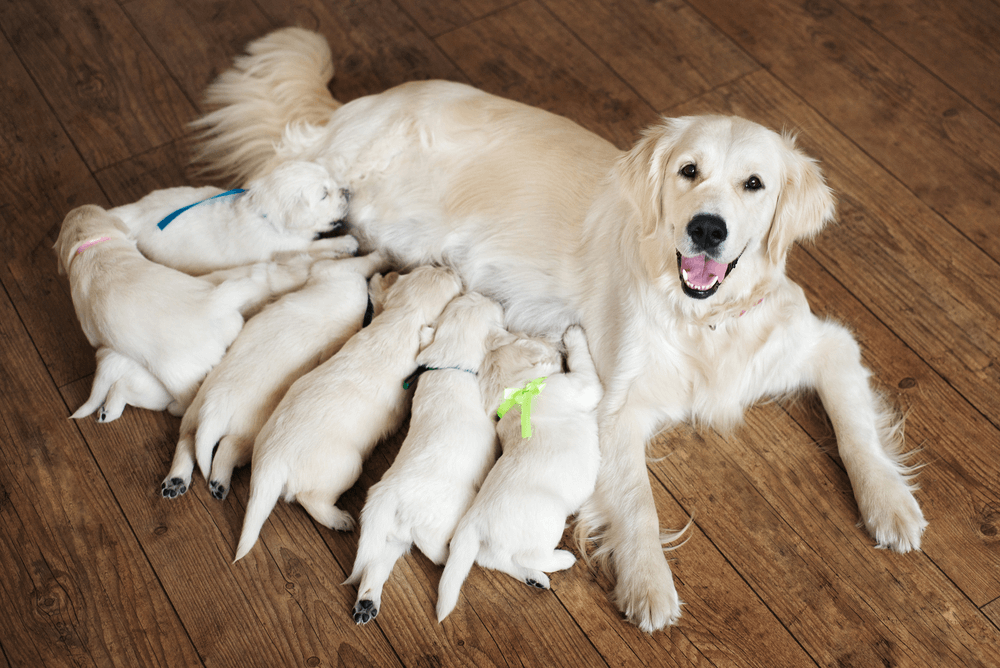Pregnancy is an extremely delicate process in which must receive a variety of specific care to maintain optimal health and be able to give birth to strong and healthy puppies. Therefore, when we decide to adopt a female, it is important to understand how heat and gestation develops in dogs, both to avoid unplanned litters, and to know how to care for and help them during pregnancy, childbirth and lactation. .
With this in mind, in this Animal Expert article, we clarify the frequent questions of tutors on this topic. Here you will understand how many puppies a dog can have, how long the puppies are born and how to act if your dog gets pregnant without any planning.
- This is probably the most common question most guardians who share their daily lives with a pregnant bitch.
- After all.
- You have to plan for the arrival of new family members! However.
- We must tell you that there is no unique and exact number of puppies that a dog can have during the same gestation.
For example, an English bull terrier can give birth from 1 to 15 puppies in the same birth, but usually the litters of this breed are consistent with 5 or 6 puppies. A smaller dog, such as a chihuahua or a yorkshire terrier, usually gives birth to only two or three puppies in the same delivery, although they can handle up to 6 dogs. On the other hand, some large breeds can easily give birth litters of 8 or 10 puppies, such as labrador females or golden retriever. In fact, a Neapolitan mastiff dog entered the famous Guinness Book of Records after giving birth to 24 puppies of the same pregnancy!
The number of puppies a dog can handle during pregnancy will depend on endogenous factors in her own body, such as race, physical texture, age and health. In general, a young dog still in its early stages tends to produce fewer puppies because her body is still maturing. In addition, the female must be healthy and well fed in order to develop a pregnancy and a noncomplicated delivery.
It is also important to know that males influence the size of the litter, not just females. Can sexually mature males fertilize more eggs and can conceive? next to the dog? larger litter. It should be remembered that the sexual maturity of all dogs (male and female) also depends on internal and external factors in their bodies. Therefore, it is recommended to consult a veterinarian before deciding to raise your best friend.
In addition, there are external factors that can influence the number of puppies a bitch can give birth to. At this point, the environment and the care we provide to a healthy dog is often an important differentiator. During pregnancy, childbirth and breastfeeding, it is essential that dogs do not get stressed and can enjoy a balanced diet, exercises adapted to their condition and have an enriched and affectionate home.
There is no exact or right time for the to finish giving birth to their puppies. It will also depend on the physical characteristics, age and health of each dog, as well as environmental factors. Therefore, it is very important that as tutors, we know how to provide a positive and safe environment, where the bitch finds a refuge to relax and be calm before, during and after delivery.
It’s important to get an idea of how long a bitch is giving birth to be able to identify when there are problems during this process. Generally, the duration of delivery is directly related to the number of puppies a bitch can have at the end of gestation. On average, it is estimated that a puppy can take 60 to 90 minutes to reach the world, with intervals of 15 to 30 minutes between births. Therefore, a dog can take 6 to 8 hours to give birth to 4 to 6 puppies. And, of course, the higher the rank, the longer the bitch will give birth.
In addition, it is important to remember that the work of the bitch can begin long before giving birth to the first puppies. It is therefore essential that a guardian recognize the symptoms of childbirth in order to provide the necessary assistance. And of course, in Animal Expert we couldn’t help but give you the best tips to help your fur at this special time.
As is usually a long process, it is normal for many tutors to have doubts about whether the delivery is over or if there are still puppies left in the dog’s belly. In fact, one of the possible complications during childbirth is that a calf gets trapped, which is usually because the calf has adopted a position that is not ideal for childbirth or because its head is too large to flow smoothly to the genitals. channel.
The best way to avoid this problem is to check with a veterinarian to find out exactly how many puppies your dog is waiting for. Ideally, you should visit a month to follow the evolution of the gestation and make sure the bitch and puppies are healthy. In this way, you can be sure to reduce risks during labor and easily recognize if there are still puppies inside the bar of your fur.
In addition, it is strongly recommended that the dog be assisted by a veterinarian when the puppies are born, especially when it is a pregnancy at risk! A trained professional will be able to respond to complications during childbirth, as well as make sure that the new mother and her offspring are stable after this delicate process.
Unfortunately, some dogs end up having a miscarriage during pregnancy. There are many reasons why a dog can lose its puppies and it is important to analyze the period and context in which this phenomenon occurs.
If embryo loss occurs before the fifth week of gestation, this may be a sign of fertility problems. In such cases, miscarriage is generally asymptomatic and does not harm the health of the mother-to-be, and may even go completely unnoticed by tutors. It is also important to mention that the loss of an embryo does not necessarily mean the end of pregnancy, as its fur can continue to normally handle other embryos.
However, if the dog has lost her cubs after the fifth week of gestation, the veterinarian will likely analyze more complex and diverse causes, such as hormonal imbalances, bacterial and viral infections or the presence of parasites in the female’s body. In such cases, dogs often experience bleeding and other symptoms that cause a marked deterioration in their health, such as fever, loss of appetite and apathy.
Remember: when you notice irregularities or changes during your dog’s pregnancy, don’t hesitate to take it to the vet right away.
Naturally, your dog tends to feel sad, listless and more reserved after a miscarriage or the loss of a puppy after delivery. Regardless of how or how many puppies die, it will be essential that the surviving puppy and puppies (if any) are examined by a veterinarian. For this reason, we recommend again that the birth of your dog be accompanied by a veterinarian, who can try to revive the puppies born lifeless and provide the immediate assistance that the bitch needs to avoid any postpartum problems.
If other puppies survive childbirth, it is also important to observe the female’s behavior to avoid problems. Sometimes, the dog can refuse and even injure a puppy, especially after a traumatic experience or if it feels vulnerable. This behavior is natural and can occur for several reasons, related to the survival instinct of all species (including humans).
If the dog realizes that he will not be able to feed and care for all the puppies, or if he identifies that a baby is too fragile to survive alone in the future, he can refuse to breastfeed, take him out of the sandbox and even cause his death. To prevent this from happening, it is essential to provide the dog with the necessary care, complete nutrition and a positive environment.
But beware: don’t touch the puppies if it’s not really necessary. During the first weeks of the puppy’s life, the dog may understand that contact with individuals and stimuli outside the same range makes the puppy more fragile and less able to survive in the natural environment. In Animal Expert we explain how to care for newborn puppies without endangering the sand and your dog.
This is a very sensitive subject and, when it comes to preventing the birth of a new litter, it is better to prevent than to cure. In other words, the safest way to prevent your fur from having puppies is to perform sterilization or castration, with the prior advice of a veterinarian to find out which procedure is best for your best friend and identify the most appropriate age. to achieve this.
This advice is not only valid for teachers, for whom pregnancy involves changes and wear and tear of the body. Do you remember feeling somehow? Constant heat? and can be reproduced throughout the year, generating several unplanned litters. Therefore, as guardians, we must be aware of the maintenance of effective reproductive control for women and men.
In addition, certain risk factors make pregnancy a threat to well-being. Age and health, for example, can lead to complications both during pregnancy and at the time of delivery, endangering the lives of dogs and puppies. Therefore, it is very important to consult a veterinarian to find out if it is safe and viable that your dog’s pregnancy continues to progress.
Currently, there are pharmaceutical and surgical methods that can interrupt a dog’s pregnancy. However, we should never try to perform these procedures or self-medicate our animals. Only a qualified veterinarian has the knowledge to determine whether the interruption is safe and what is the safest way to do so. Therefore, before making decisions about your dog’s pregnancy, consult a veterinarian.
If you want to read articles similar to How many puppies can a dog have ?, we recommend that you visit our Cio section.

